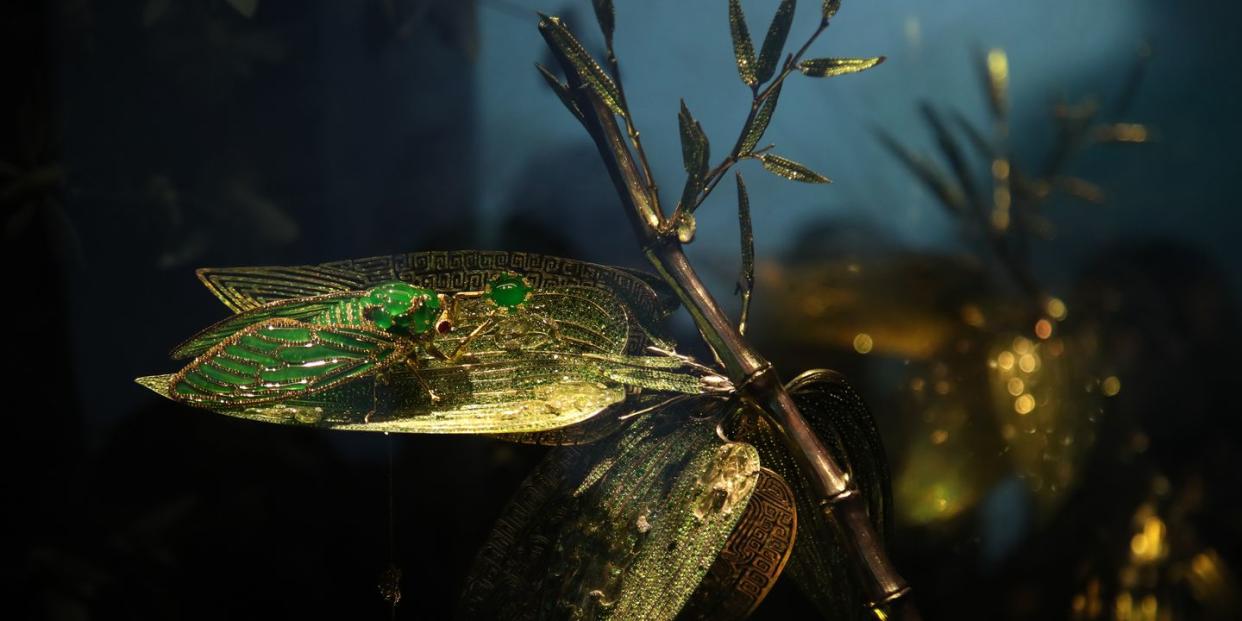My Metamorphosis

For years in my 20s, I wore the wrong shoe size—a 7 when I am actually closer to an 8. I did not know this until I discovered a bunion on my left foot and began ranting to my boyfriend, T, about how all shoes are uncomfortable, how my toes pinched and heels bled, how early hominins may have been right to squelch their naked toes in the soft earth.
T stared at me with polite confusion. “I don’t think shoes are supposed to be uncomfortable,” they eventually responded. They suggested I try on a pair of their shoes, a size up from what I wore. When I slipped my feet inside the shoe, I felt nothing: no squeeze, no pinch, just space. I walked around our apartment, wobbly until I wasn’t. This revelation now seems mortifyingly obvious. But I had become so inured to my ambient discomfort that I assumed everyone felt this way—inconvenienced and constricted by the friction between our bodies and what we use to conceal them.
I have always been disillusioned with the limits of human growth. Even as babies we resemble our future selves, our skin merely stretching, furring, and wrinkling as we age. But insects have a much more fantastic notion of growing up. Their rigid exoskeletons cannot expand with growth, so they molt. They shed old skins and form new ones that are billowing and soft, able to hold more body than before. Some insects like praying mantises undergo transformations with some bodily continuity. They hatch from eggs into tiny wingless adults called nymphs. Nymphs molt into more nymphs, growing larger and sprouting wing buds until the final molt, when the adult emerges like a new, green leaf. But the more famous kind of metamorphosis is more total—that quintessential transmogrification from a caterpillar to chrysalis to butterfly. Born as an egg, growing up as a larva, congealing into a pupa, and unfurling into a winged adult.
It’s idyllic to think that all transitions could be this easy: one form sliding cleanly into another, implying a kind of progression. What could be more aspirational than wings? But molting is no easy feat. A transforming insect cannot eat. Sometimes it cannot move. Mayfly larvae must stop breathing for up to an hour as their exoskeletons slip off. The firebrat, a tiny torpedo that feeds on bookbindings, molts as many as 60 times in the few years it lives. Even for insects, there is no one way to transform. These changes can be creeping; some caterpillars already have tiny wings enclosed, unseen within their bodies. Most caterpillars carry no trace of their past selves after molts. Many will eat the skin they shed, swallowing a past silhouette. But some species cannot bear to part with their old selves. In Australia and New Zealand, a moth called the gum-leaf skeletonizer hoards its old heads, stacking them atop its current head like de-nested Matryoshka dolls. These headpieces grow taller with each molt, tapering into a tower of dead heads that can be nearly half as tall as the caterpillar is long. The display is certainly grotesque. But the many-headed tiara may help the caterpillar avoid the jaws of a predator, offering the gift of a more threatening aura and, perhaps, an extra chance of escape.
Maybe this is why I, too, hoard remnants of my past selves. My apartment teems with objects I will never wear again but am afraid to throw away: a sequined chartreuse dress, an unopened vial of hibiscus perfume, a pair of crocodilian heels in a dusty box. Maybe Sabrina—a name that conjures a mold I often do not fit, a name that many of my friends do not use—is also a head I will cast off when I am ready. Maybe hoarding these things makes molting easier, a way of holding onto my past selves. Maybe I will find my way back to them in new ways.
Like all caterpillars, the gum-leaf skeletonizer caterpillar eventually stiffens into a pupa, the protective cocoon in which it will dissolve its body into unrecognizable goo. Here, it reshapes itself into an adult, cells dividing into wings, antennae, legs, and genitals. If you cut open the cocoon, the once-caterpillar would be little more than soup. But if you give it time, something as miraculous as a moth might emerge—silky brown wings corrugated like tree bark.
For a few months now, each night before bed, I smear my skin with an ooze that has the power to reshape my body. At first, it felt like nothing was happening, my human form as rigid as ever. But lately, I can feel myself shifting: thrumming gravel in my voice, pimples on my chin, a pinkish bulge that is now larger than an almond, a newly incandescent desire for sex. But unlike something shielded in a cocoon, my soft body is out in the world. Everyone around me is witness to my transformation, whether they know it or not. I karaoke through my voice cracks, hovering between octaves in search of the safest place to land.
In truth, I do not know where that will be. But I know this: I deserve to be comfortable. I deserve to feel at home in my body and what surrounds it. Because in spite of all the voice cracks and pimples and other embarrassments of a second puberty, I have never felt lighter, more free. Because molting is an act of love. It is a promise that you will grow into yourself and your wild and unexpected future. It is a promise to trust the process, that even mired in goo and guts, something like bliss may wait on the other side.
You Might Also Like

